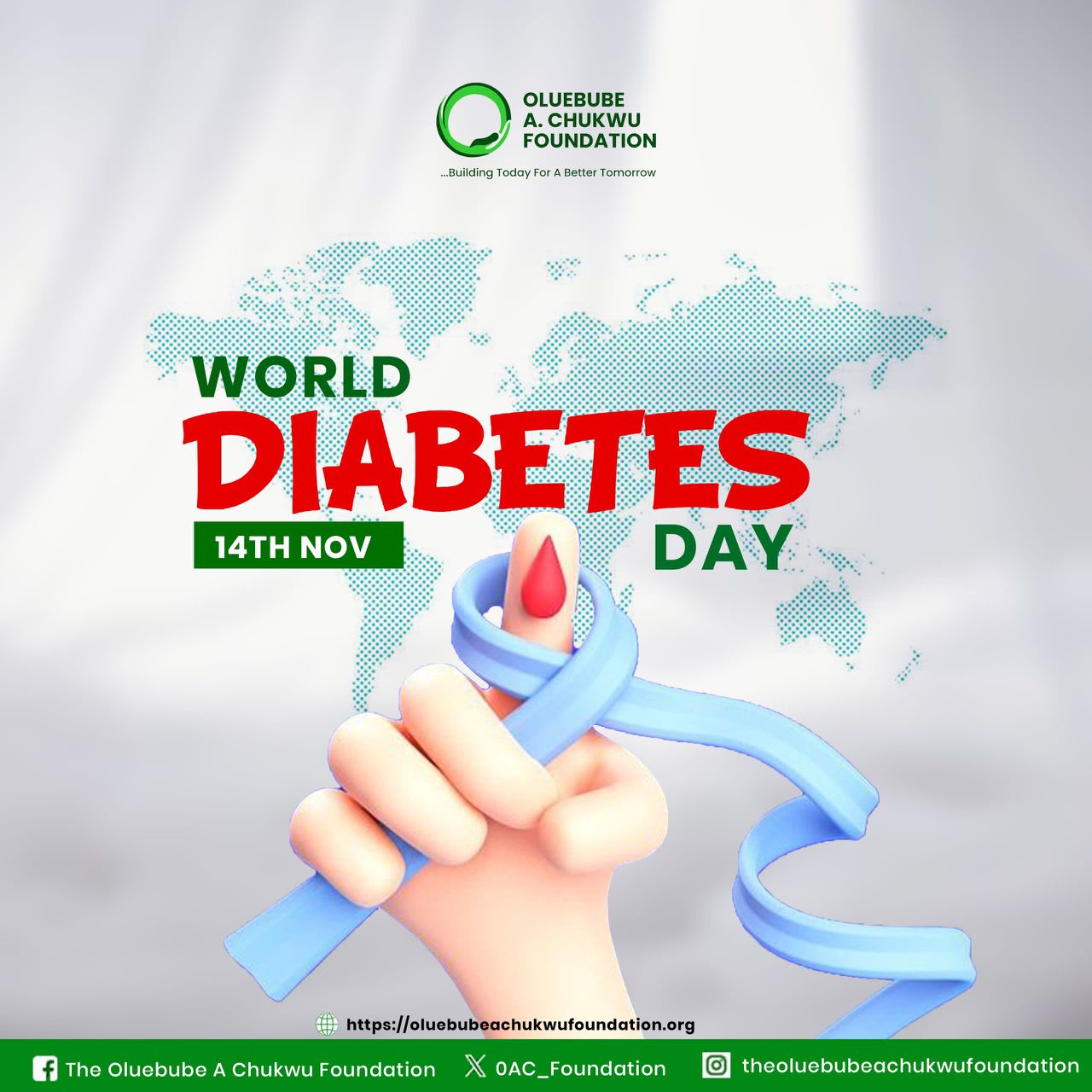Understanding Diabetes: Awareness, Causes And Care.

Understanding Diabetes: Awareness, Causes And Care.
Diabetes is a chronic health condition that occurs when the body cannot properly process or use sugar (glucose) from the food we eat. Glucose is the main source of energy for our cells, and it needs insulin, a hormone produced by the pancreas to enter those cells. When the body doesn’t make enough insulin, or cannot use it well, glucose stays in the blood, leading to high blood sugar levels.
Types of diabetes:
1: Type 1 Diabetes, often diagnosed in childhood or adolescence, occurs when the body stops producing insulin completely.
2: Type 2 Diabetes, is more common, it happens when the body doesn’t use insulin properly or doesn’t make enough insulin. This type is often linked to lifestyle factors like unhealthy diet, lack of physical activity, being overweight, or family history.
Causes of diabetes and Common Risk factors
Family history of diabetes
Unhealthy eating habits (especially foods high in sugar and processed fats)
Physical inactivity
Being overweight or obese
High blood pressure and cholesterol
Age (risk increases after 40, though it’s now common in younger people too)
Signs and symptoms
Frequent urination, especially at night
Excessive thirst and dry mouth
Unusual tiredness or weakness
Unexplained weight loss
Blurred vision
Slow healing of wounds
Numbness or tingling in hands or feet
Note that early detection is key and it is important to check your blood sugar level by a health care professional.
Management and prevention
Type 1 diabetes is an autoimmune condition meaning the body’s immune system mistakenly attacks the insulin-producing cells in the pancreas. As a result, the body can no longer produce insulin on its own. It can however be managed effectively by
1: Insulin therapy which is simply taking insulin injections everyday as prescribed by a doctor
2: Healthy Eating and Meal planning.
3: Regular Physical Activity
4: Blood Sugar Monitoring
Type 2 can also be managed through healthy lifestyle changes which includes:
1: Eat a balanced diet: Focus on vegetables, fruits, whole grains, and lean proteins. Avoid sugary drinks and processed foods.
2: Exercise regularly: At least 30 minutes of physical activity (like walking or cycling) most days of the week.
3: Maintain a healthy weight: Even a small weight loss can make a big difference.
4: Take medication as prescribed: If you’re diagnosed, follow your doctor’s treatment plan.
5: Monitor your blood sugar levels regularly.
6: Avoid smoking and limit alcohol intake.
Living with diabetes doesn’t mean your life stops, it just means learning to manage your health more intentionally. With awareness, early detection, and consistent care, people with diabetes can live long, active, and fulfilling lives.

0 Comments